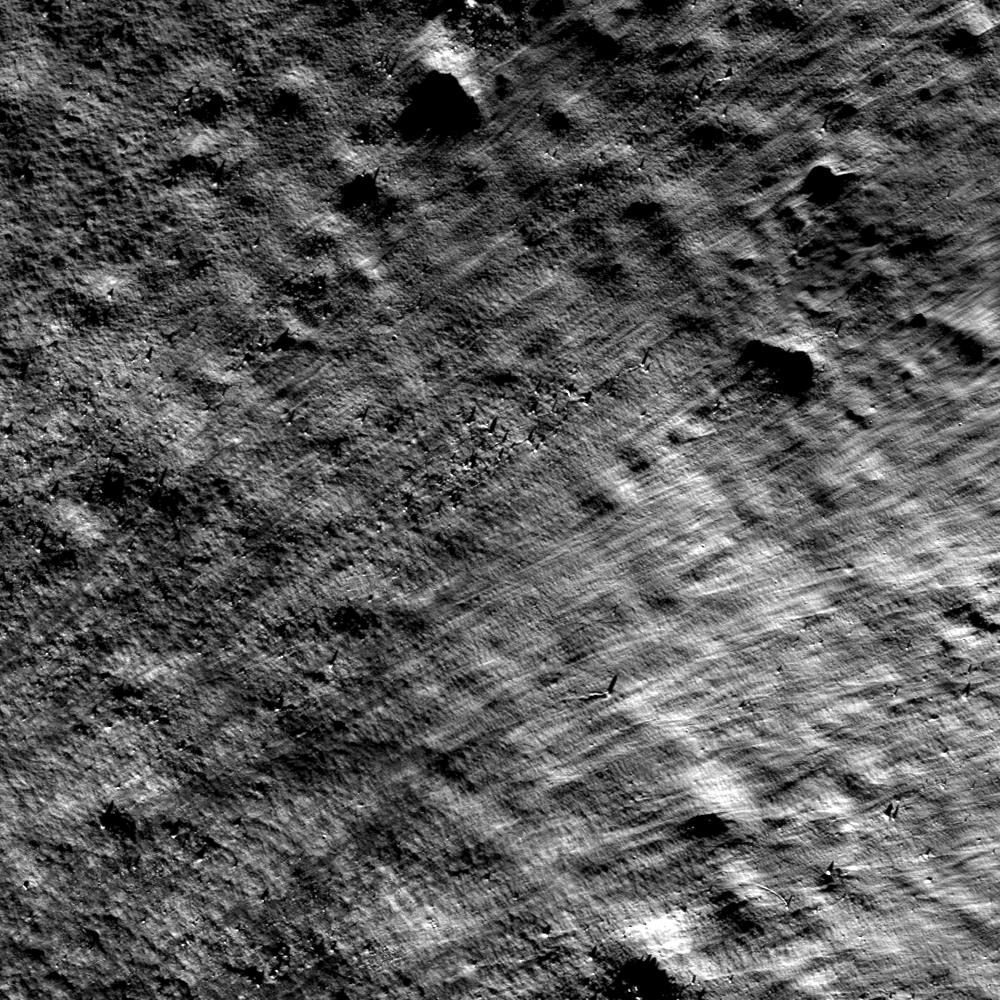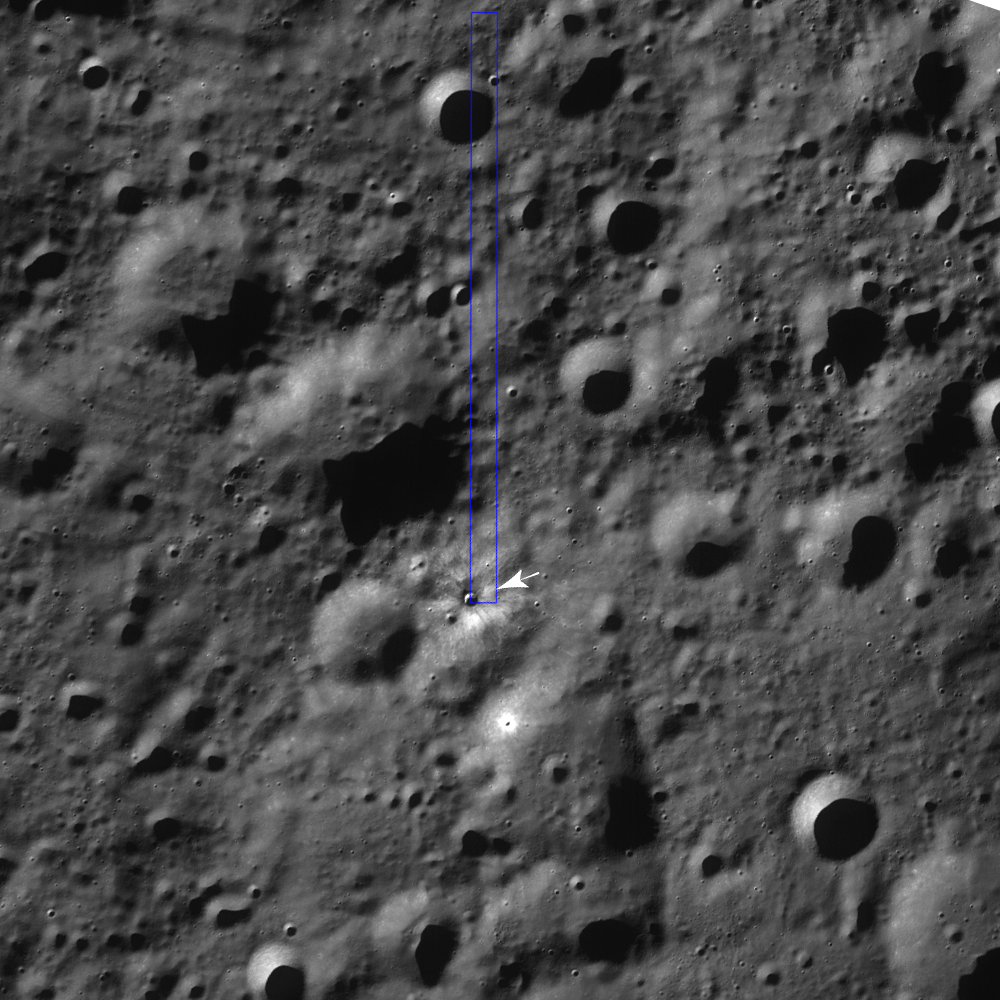
This far side high latitude (77°N) fresh crater (~1.1 km in diameter) presents striking linear patterns in its ejecta. Due to the high latitudes, the incidence angle is always very high in this area (including this image), which enhances subtle topographic features. The ejecta source crater is toward the bottom left (off the image), thus the ejecta landed with the velocity component in upper right direction, consistent with the linear stripes dominating whole area of this image.
Interestingly, the lower left (closest to the rim) and upper left corners of this image show a craggy, rough surface, while the right portion shows only the striped pattern. What causes such texture differences within the same ejecta blanket?
One possibility is the impact melt content was enriched near the rim, increasing the cohesion among the rock fragments and decelerating the flow inducing multiple pressure ridges perpendicular to the flow direction. Perhaps variations in roughness of the pre-existing surface controlled the final look of the ejecta. What else?
Explore this fascinating ejecta morphology in full NAC frame, and find your own hypothesis and answers!
Related posts:
Ejecta sweeps the surface, Action Shot, Polka-dot Ejecta, Smooth Ejecta, In the Wake of Giordano Bruno, Scours and Ejecta Near Jules Verne Y, Lassell D Ejecta, Swept Surface, Ejecta Patterns
Published by Hiroyuki Sato on 16 May 2013
